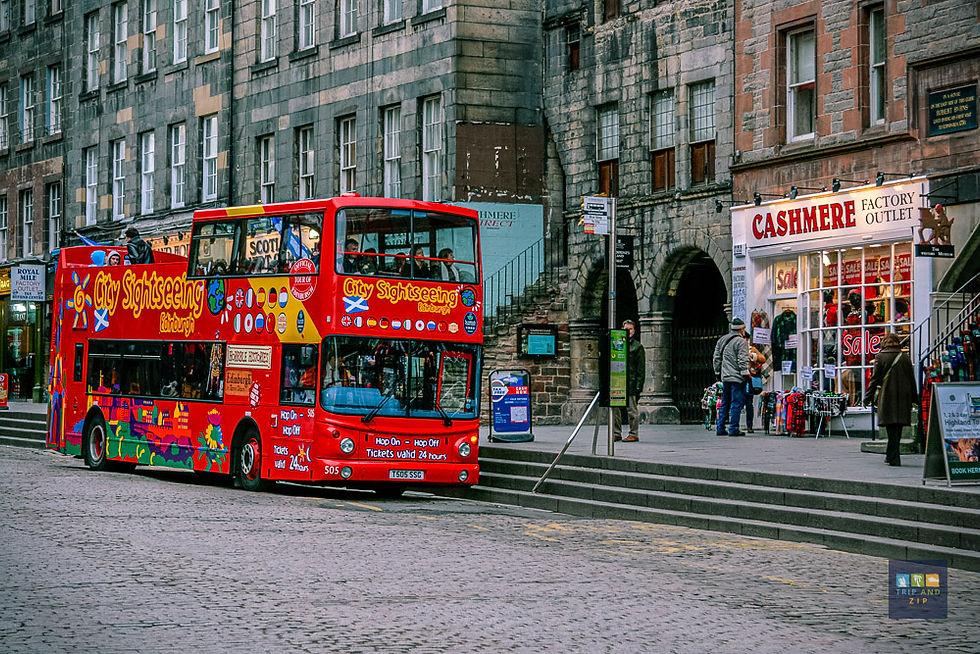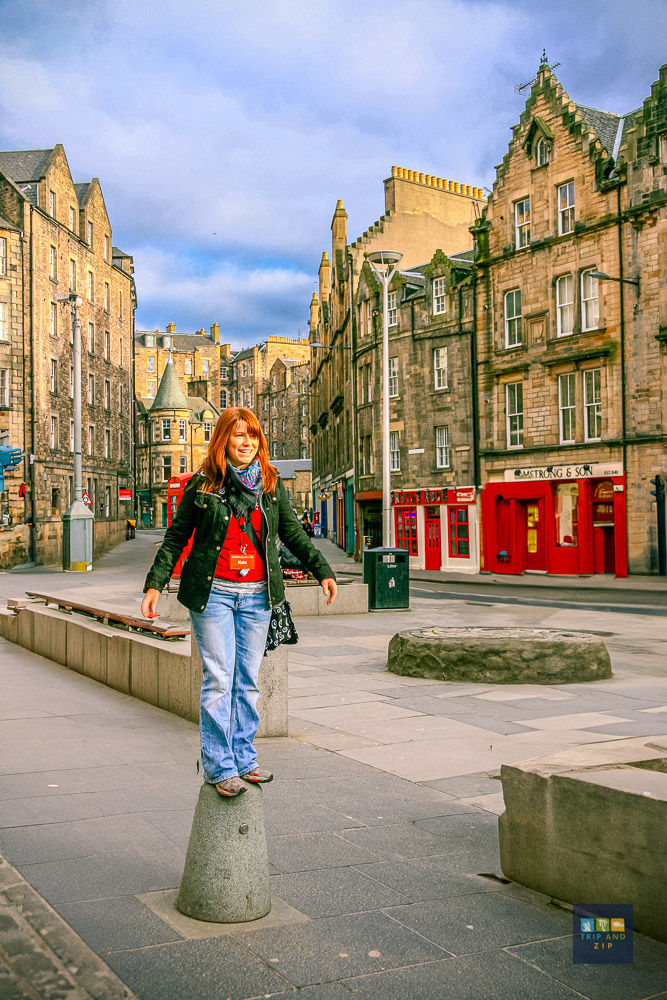Whisky, Castles, and Scottish Charms: A Highland Adventure (II)
- Trip And Zip

- Feb 12, 2010
- 3 min read
Updated: Feb 12
In part (I) of my stories about Scotland, I left off with Robert the Bruce and William Wallace… and not by coincidence, as the subject deserves to be explored further. I found that in most tourist spots in Edinburgh, there is a noticeable local pride in being Scottish and embracing a free spirit. Strolling through the bookshops in tourist areas, I noticed that many references to Scotland’s past highlight the late 12th and early 13th centuries—a period when the Scottish free spirit was reborn under Wallace and materialized into a new independent state under Robert the Bruce.

One eloquent symbol of this Scottish spirit is the story of the “Stone of Destiny,” considered one of Scotland's treasures and prominently displayed alongside the Scottish Crown Jewels in Edinburgh Castle. Mentioned for centuries as part of the coronation ceremonies of ancient Scottish kings at Scone, near Perth, the “Stone of Destiny” was simply taken in 1296 by the English King Edward I, transported to Westminster Abbey, and used in the coronation protocol of English kings for centuries afterward.
The absence of this symbol of Scotland, particularly being in the hands of their English rivals, often sparked conflicts between the two nations. Scots never ceased demanding the return of the stone, while the English refused any discussion. The issue remained unresolved even after the formation of Great Britain (1714) and well into the 20th century.
The situation sometimes reached unimaginable—and even humorous—extremes. Young Scots would set themselves the goal of breaking into Westminster Abbey, taking the stone, and returning it to Scotland. One famous case occurred in 1950, when the stone was stolen, brought back to Scotland, but eventually returned to England by authorities, as the act was deemed a crime. The story of the stone fueled passions well into the 1990s and was even used as a political topic during electoral campaigns of that time. Finally, the “Stone of Destiny” was returned to the Scots in 1996, under an agreement stipulating that it would only be relocated for the coronation ceremonies of future British monarchs.
I can’t comment much on the Scottish-English rivalry, as I have only part of the context. However, as an outside observer who enjoys history and is familiar with events in the two countries’ pasts, I find it fascinating, especially since this rivalry has transformed into a friendly competition today, whether in sports, economy, art, or other domains.

I had the chance to learn a wealth of information about Scotland and Edinburgh almost by accident when I joined a “3-hour free walking tour” organized in the “Old Town” area of Scotland’s capital. At the hotel where I stayed, I saw some flyers advertising FREE tours. I was skeptical at first and viewed the offer suspiciously. While walking near the starting point of the tour, I chatted briefly with the guide and noticed that the participants on the list were very enthusiastic.
This intrigued me, so I joined the tour, and I was delighted with the experience. It’s truly FREE, leaving it up to the participants to decide whether to tip the guide and how much. Entrance tickets to museums or other attractions are not included—it’s simply a city walk led by a knowledgeable and enthusiastic guide who highlights essential and unique aspects of the sites.

I must mention that the guide we had (her name was Kate, about 1.6 meters tall, with fiery red hair, and very charming!) worked hard to earn her tips! She shared fascinating stories, sang, danced, shouted, played roles, and did everything she could to ensure we had fun and understood as much as possible about the Scottish spirit! Her way of recounting part of the “Stone of Destiny” story (the 1950 episode) was FABULOUS—over ten adults were rolling with laughter. I’m sure her tips were well deserved!
She also shared the emotional story of Greyfriars Bobby, the loyal Skye Terrier who spent 14 years guarding his owner’s grave. His unwavering devotion remains one of Scotland’s most cherished legends, a timeless tale of loyalty and love.

The website of the company organizing these tours is www.newedinburghtours.com, and as far as I understand, they organize similar tours in other famous European cities. I’ll definitely try them again!



Comments